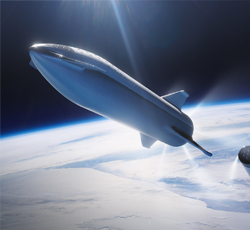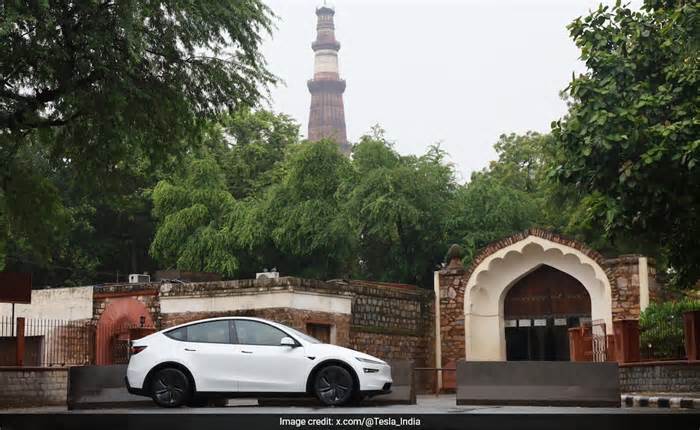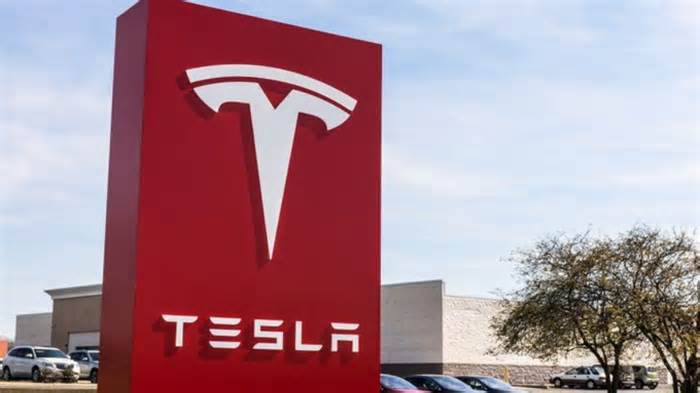
Building a rocket in a garage to take on SpaceX and Blue Origin
- by CNET
- May 29, 2019
- 0 Comments
- 0 Likes Flag 0 Of 5

Neil Armstrong
set foot on the moon in July 1969, it was an Australian radio telescope that beamed the first images around the globe. You'd be forgiven for thinking Australia stands at the forefront of the space race, but the country has lagged behind in recognizing the huge economic opportunity space presents. Its first space agency was created in 1987 and disbanded nine years later.
Fortunately for companies like Gilmour and a handful of its contemporaries, the Australian government funded the creation of a new space agency in July 2018. Its creation generated a lot of interest in both the mainstream media and the public, with space becoming a critical factor to a healthy economy seemingly overnight.
"The Australian Space Agency has captured the imagination of all Australians," says Karen Andrews, Australia's minister for industry, science and technology. "We're already seeing industry across the country making progress towards establishing launch capability."
Rocket science looks a lot like this.
Ian Knighton/CNET
Yet without a launch site, One Vision's inaugural launch will occur in the middle of a cattle station. The team will need to drive the rocket and its specially designed launch platform 20 hours west, on the back of a flatbed truck, deep into the barren heart of the Australian outback.
Gilmour's rocket launch is subject to strict regulations enforced by the country's Civil Aviation Safety Authority, which makes Gilmour's mission twofold: It needs to clear a series of administrative and insurance hurdles and it needs to aim and launch a rocket at the sky.
If all goes according to plan, One Vision will blast off to approximately 40 kilometers above the Earth, four times higher than a commercial airliner can fly, testing the capabilities of Gilmour's rocket engine and gathering valuable data. In the days prior to launch, Gilmour's small team of 15 or so engineers move around the factory with purpose.
Settling in for our interview, in front of the rocket that carries all his hopes, I ask Gilmour if he's nervous. A tense smile flits across his face.
"You're always nervous before a test," he says.
Gimme One Vision
Gilmour's crowded factory doesn't initially seem like the kind of place fit for building a rocket.
In one corner, behind boxes and shelving, a dark room is embossed with "SSION CONTROL", the letters "M" and "I" having worn away. Steel shipping containers have been transformed into offices, and cluttered overhead are models of NASA space shuttles and capsules, once used by Gilmour as part of the company's astronaut training academy. These relics kickstarted Gilmour's rocket aspirations.
"It gave us a lot of technology in stuff that we would eventually use in space vehicles," says Gilmour.
Shipping containers act as offices at Gilmour HQ.
Ian Knighton/CNET
But the model simulators now lie dormant. After leaving his job as corporate sales head at Citibank in 2015, Gilmour, together with his brother James and wife, Michelle, shifted the company's focus from simulators to spacecraft. Quitting a lucrative job to attack rocket science full time, Adam hoovered up as much information about building rockets as he could. He had no formal qualifications in aerospace engineering. Instead, on long-haul flights, he'd read up on NASA technical papers and rocket propulsion technology.
That entrepreneurial mindset has driven Gilmour since day one. Its "factory" is nothing more than a white garage at the end of a quiet cul-de-sac. Its manufacturing facility is full of old chairs and a few kitchen appliances , remnants of its former life as a roadside cafe. And yet, inside lies the heart of Gilmour's operation: a 3D printer that provides the technology for the company's patented rocket fuel.
"We did a lot of development work around the fuel," Gilmour explains without giving much away. "We used techniques such as 3D printing for some of the parts of the rocket, and we developed our own fuel that works really well, and that's what we've been testing."
The fuel is a closely guarded secret, and when we see the 3D printer in action, we're asked to turn off the video camera. We do know, however, that Gilmour's rocket engine is a hybrid technology, using a solid fuel and a liquid oxidizer. When the liquid and solid mix, it creates the thrust necessary to achieve liftoff.
"We've tested the rocket engine five times on the ground, and the combustion efficiency has been great, the stability has been great," Gilmour explains.
One Vision is fitted with just one of Gilmour's hybrid rocket engines, which can generate up to 80 kilonewtons of thrust at launch. For comparison, a single Merlin engine used in SpaceX's Falcon 9 rocket boosters generates about 10 times that amount of thrust, at 845 kN.
"In aerospace, it's a good idea to not only do ground tests, where you have the rocket engine fixed to the ground, but to actually put it in a vehicle and see how does it behave in flight."
One launch
The journey from Gilmour's headquarters to the launch site is a mission in and of itself -- and it's already been delayed several times, pushing back One Vision's first flight two months.
Just to be able to get One Vision off the ground, the entire Gilmour team has to travel 20 hours inland. The rocket is loaded directly onto a mobile launch platform and driven 1150 miles west across the barren Australian outback. At this time of year, the temperature hovers around 28 degrees Celsius ( about 83 degrees Fahrenheit).
Trailing on the back of another truck is a shipping container that will eventually become mission control for the launch, full of computers and monitors.
If the engine starts, we're good. We're going up.
Adam Gilmour
If One Vision does achieve liftoff, Gilmour Space Technologies will be well on the way to achieving another milestone: Building a three-stage rocket dubbed "Eris," it will blast off to low Earth orbit, dropping off small satellites 100 miles (160 kilometers) above the surface.
"Eris is a three-stage vehicle, so it has three separate stages that fire individual sections," Gilmour explains. "We have designed it to be able to take all of the known small satellites that are being built and designed right now, into space."
The company has started work on Eris, and completion is tentatively scheduled in for 2020. Ultimately, though, Gilmour's ambitions are even bigger than delivering heavy payloads to orbit -- and those ambitions are obvious if you glance at the company's logo, designed by Gilmour's daughter, showing a rocket blasting off past the moon and Mars, into the infinite dark of the cosmos. In the future, they might launch the kind of rocket that rivals SpaceX, Blue Origin or Rocket Lab's best.
That is, of course, if One Vision -- now slated to launch in late June -- shoots off from a cattle station in the Queensland bush. What are the odds of success? Gilmour invokes one of commercial spaceflight's most successful names when delivering his verdict.
"Elon [Musk] likes to say he has a 50 percent chance of success," he smiles. "I think we're higher than that but, you know, there's always a small chance of failure."
Gilmour knows there's a lot riding on One Vision's first flight. In one flash of light a dream he had for most of his life, he hopes, will finally be realized. His rocket will be going to space.
"Once the engine starts, the motors are very stable, they're pretty bulletproof. So if the engine starts, we're good. We're going up."
Meet the SpaceX Falcon Heavy, the world's most powerful rocket
+10 More
Please first to comment
Related Post
Stay Connected
Tweets by elonmuskTo get the latest tweets please make sure you are logged in on X on this browser.
Sponsored
Popular Post
Sam Altman's OpenAI Takes On Elon Musk's Grok in AI Chess Tournament Final - Who Won?
28 ViewsAug 09 ,2025






 Energy
Energy


















